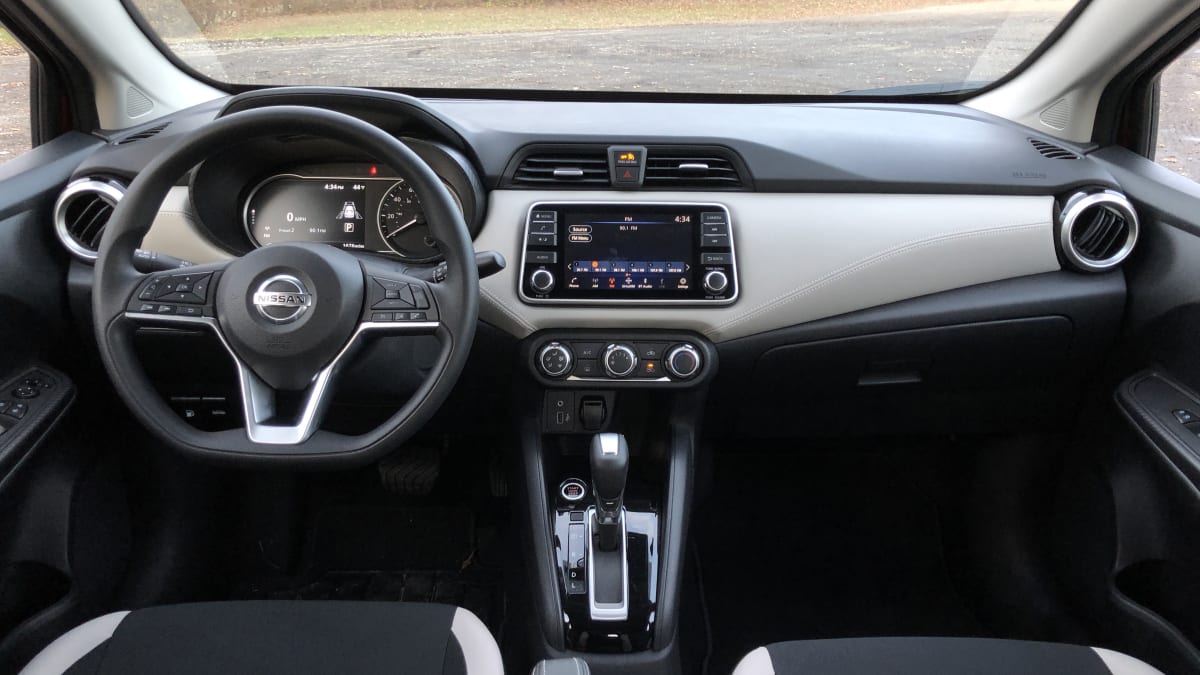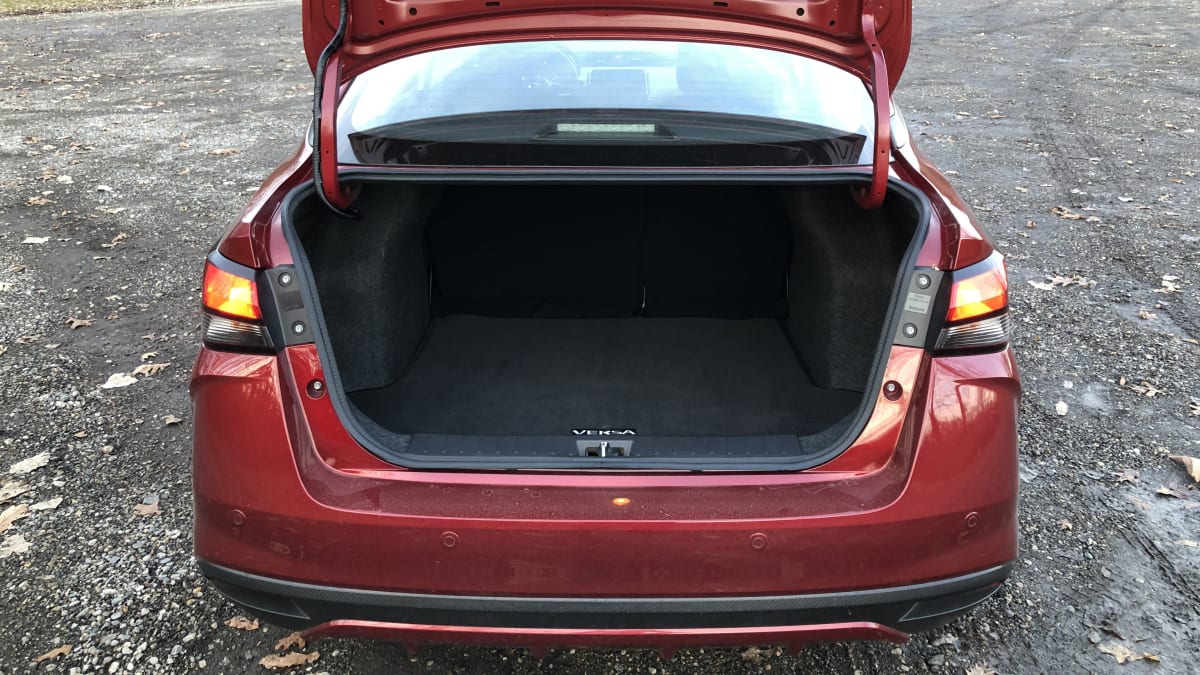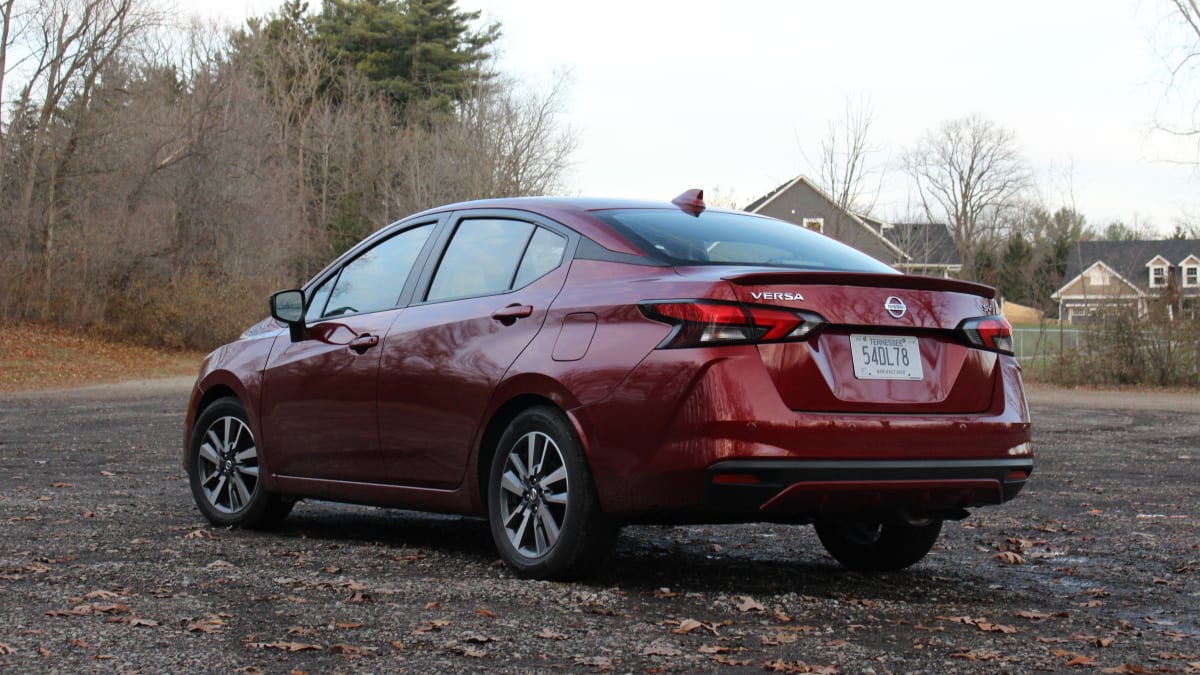Audi Repair Shop Doylestown
Call 267 279 9477 to schedule a appointment
Like a once-ugly caterpillar emerging from its cocoon, the completely redesigned 2020 Nissan Versa adopts a modern and far more attractive design that should attract buyers for reasons other than a rock-bottom price tag and abundant room. Now only available as a sedan, the new Versa is longer, lower and wider, and although not quite as spacious as before, it’s still better than most. So is its value. The Versa comes standard with niceties such as automatic emergency braking and a bright, clear touchscreen infotainment system. Only its pokey engine holds it back (literally), but if you’re looking for a comfortable, attractive and affordable small sedan, the Versa is a strong option.
If you’re looking for more practicality, the Nissan Kicks sports a similar interior design and driving experience, but wraps it in a crossover shape with a hatchback cargo area that boasts nearly 70% more space. It does cost $19,965, about $1,000 more than the mid-level Versa, though. Part of that extra cost is because it’s only available with a CVT. If you want something sportier, you’ll want to consider something like the Honda Fit or Kia Rio, the former offers enormous amounts of cargo space like the Kicks, but with more power and better handling. The same goes for the Rio. It’s smaller inside than the Fit and Kicks, but it’s distinctively available in either sedan or hatchback body styles.
What’s new for 2020?
The Nissan Versa was completely redesigned for 2020. It has a sleeker and more mature exterior, a much higher quality (albeit slightly smaller) interior, more standard safety and convenience features, and a more powerful engine. You can read more about its many changes in our first drive review.
What’s the Versa’s interior and in-car technology like?
One of the biggest improvements to the Versa is interior quality. The upright, plasticky dash of the old model has been supplanted by a lower, wider looking piece. Many of the plastics are still hard and not especially pleasant, but they’re par for this low-cost segment. The higher SV and SR trims spruce up the interior further with attractive contrasting upholstery and vinyl-upholstered dash panels. All trims only come with cloth seating.
As with the previous model, all Versas get a standard 7-inch touchscreen infotainment system. It’s the latest system, shared with the Kicks, and it’s responsive and simple to use. It’s flanked by convenient shortcut buttons and knobs for volume and tuning. Bluetooth and USB connectivity are also standard, while the SV and SR trim both add Apple CarPlay and Android Auto standard. Those phone-mirroring systems aren’t available at all on the base S trim. The SV and SR also have a 7-inch screen integrated in the instrument cluster that goes where the analog tachometer is in the S trim. This screen features a digital tachometer dial as well as information on fuel economy and driving assistance features.
How big is the Versa?
For 2020, the Versa grew on the outside, but ended up shrinking slightly on the inside, at least according to the official specifications. It’s 1.6 inches longer overall with a 0.7-inch longer wheelbase. It’s also 0.8 inch wider, but sits 2.3 inches lower. That height reduction may sound like the new Versa will cramp your noggins, but as the old roof was shaped like the Astrodome, there was literally room for reduction.
Importantly, the front seats gain 2.7 inches of legroom and more than an inch of shoulder room, and feel quite spacious – more than you’d expect from such a tiny car. The seats themselves are soft and comfortable, and lots of adjustments in seating and steering wheel position make it easy to find a good driving position.
Measurements in the rear seats don’t tell the whole story. Shoulder room grows by almost 2 inches, but leg room decreases by a shocking 6 inches. Two things to note here: the Versa’s predecessor had an incredible amount of rear leg room, now reduced to a more average figure. Secondly, interior dimensions are not necessarily a predictor of real-world utility. The good news is that, having actually sat in the back, there’s still room for someone about 6 feet tall to sit behind him or herself comfortably, even on longer trips. And indeed, there’s no shortage of headroom. As for cargo space, it has 15 cubic feet, which is comparable to those of some midsize sedans.
What’s the Versa’s performance and fuel economy?
The Versa is only available with one engine, a naturally aspirated 1.6-liter inline-four that makes 122 horsepower and 114 pound-feet of torque, which is an increase of 13 horsepower and 7 pound-feet of torque compared to the previous model. The engine can be paired with either a five-speed manual transmission or a CVT, both of which send power solely to the front wheels. The manual transmission is only available on the base trim, so most will have the CVT that helps return 32 mpg city, 40 mpg highway and 35 mpg combined. That’s roughly tied with the CVT-equipped Honda Fit and the automatic-equipped Toyota Yaris sedan, and slightly ahead of the automatic-equipped Hyundai Accent and Kia Rio. It also does better than its corporate cousin, the Nissan Kicks. The manual only manages 27 mpg city, 35 mpg highway and 30 mpg combined, which slightly trails the manual-equipped Honda Fit and Hyundai Accent.
What’s the Versa like to drive?
The Versa is a pleasant but unexciting car to drive. The ride is a touch firm, but compared to competitors such as the Honda Fit and Kia Rio, it’s still softer and exhibits more body roll. Its steering is nicely weighted if uncommunicative, and isn’t as eager to turn-in as those competitors, but it feels secure and stable. While the chassis is competitive, the engine is far from it. Despite the added power, the Versa is still brutally slow, requiring foot-to-the-floor driving at nearly every on-ramp or passing attempt. That also means you’ll frequently hear the little engine buzzing and thrashing away, intruding on the otherwise quiet cabin. On the plus side, the CVT that most Versas will have is smooth, responsive and unobtrusive. With more power, the Versa would have a real shot at being best in class.
What more can I read about the Nissan Versa?
We drive the completely redesigned Nissan Versa for the first time, highlighting what’s new, as well as its design and engineering.
What features are available and what’s the Versa’s price?
The Nissan Versa starts at $15,625 for the S trim with a manual transmission. With an automatic, the same car climbs to $17,295. The basic Versa comes standard with cruise control, air conditioning, push-button starting, USB and Bluetooth phone connectivity, 7-inch touchscreen infotainment system, automatic headlights and 15-inch steel wheels with wheel covers. A strange difference between the manual and CVT Versa S is that the manual version does not have fold down rear seats.
Opting for the SV trim adds 16-inch alloy wheels, heated body-color side mirrors, body-color door handles, driver arm rest, 7-inch instrument multifunction instrument cluster display, Apple CarPlay and Android Auto compatibility, rear seat reminder, driver alertness monitor, blind-spot warning and rear cross-traffic alert. The top SR trim features LED headlights, 17-inch alloy wheels, a rear spoiler, automatic climate control, proximity locking, an upgraded six-speaker sound system, leather-wrapped steering wheel and shift knob. The trim also has optional heated front seats and adaptive cruise control.
Pricing for each trim is listed below:
- S: $15,625
- SV: $18,535
- SR: $19,135
What are Versa’s safety equipment and crash ratings?
The new Nissan Versa has not been given crash test ratings by IIHS or NHTSA. But the Versa does come standard with automatic emergency braking both front and rear, lane-departure warning and automatic high-beam headlights. The SV and SR add blind-spot warning and rear-cross traffic alert systems. Adaptive cruise control is an option only available on the SR.
from Autoblog https://ift.tt/2sSiwCL



